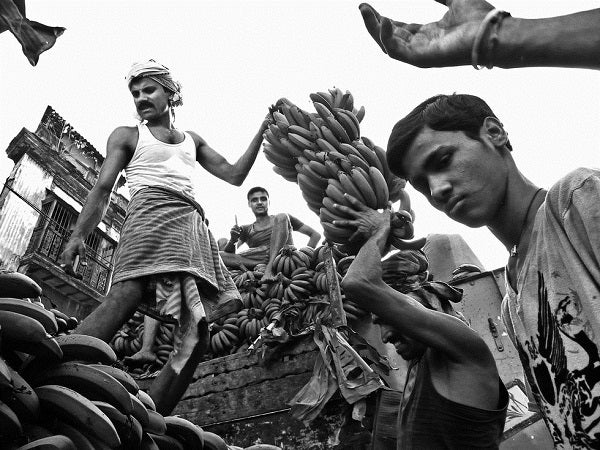How India’s New Payments Banks Stack Up
India sparked optimism for greater financial inclusion last year when it created a new category of banking service provider—the payments bank. The Reserve Bank of India (RBI) expected these institutions to fill a vacuum in the financial inclusion landscape, and observers have hoped for the same. However, before a single payments bank was even launched, three players chose to surrender their license approvals. One of these cited increased competition and the time it would take to profit from its investment. (The other two did not provide reasons for bowing out.)
This action stirred lively debates about the prudence of creating this new category. What does the remaining line-up of payments banks look like? How do the various institutions already approved to launch payments banks stack up?

In August 2015, RBI announced a new category of licenses for payments banks. The license approvals were issued to a varied set of applicants who were expected to offer banking and payments services to low-income customers. Unlike commercial banks, payments banks are not allowed to offer term deposits or credit. Payments banks are widely expected to innovate by offering services through low-cost channels rather than through the expensive bank branch infrastructure.
The approved payments banks all have different starting points, and therefore different strengths and challenges.
MNO-led payments banks
These include Airtel, Idea, Reliance Jio and Vodafone.
Strengths
- Financially sound: Financial strength has clearly played a decisive role in RBI’s choice of nearly all the approved players.
- Widespread distribution for selling airtime: Outsourcing the physical location (corner shops) and manpower (shop owner and his staff) brings tremendous scale and cost efficiencies.
- Experience operating a mobile money service: Most mobile network operators (MNOs) have already invested in large-scale technology systems and distribution infrastructure to offer mobile money or “wallet” services. This should reduce their technology roll-out timeframe, allowing speed to market.
- Possible adjacent revenues: Bill payments, insurance top-ups, domestic remittances and eventually small-value merchant payments could be opportunities for adjacent revenues. But this may not be a sufficient differentiator since it is fairly easy for new entrants to provide such services.
- Bank partnership: MNOs jointly applied for the licenses with commercial banks, opening the door to the scarce talent pool and skill sets MNOs need to manage deposits and treasury functions. As a business correspondent, payments banks can also distribute credit products for their banking partners.
- Known brands: The parent businesses bring with them the strength of their brand built over decades, with strong brand awareness across urban and rural, rich and poor in India.
Challenges
- Existing networks do not deliver financial services: MNOs’ distribution networks were custom built for airtime and SIM card sales.
- Agent ownership: MNOs rarely have direct agreements with agents, and many agents have nonexclusive arrangements that allow them to sell services on behalf of several different MNOs. This can lead to stiff competition to acquire agents through escalating commissions, which does not bode well for a potentially low-margin business.
- Agent compensation: Airtime margins for retailers are already slim. How can MNOs make compensation attractive for agents, keep transaction costs low, and still make a profit?
- Redo know-your-customer (KYC) requirements: Current regulations do not allow MNOs to re-use KYC diligence documentation obtained for issuing SIM cards to issue bank accounts. This takes away a potential cost advantage that MNOs may have had over other payments banks.
- Translating brand awareness into trust for financial services: While customers are used to doing business with these companies, they have not done their financial business through them. Will customers be willing to make this shift?
Established public sector player-led payments banks
These include the Department of Post (DoP) and National Securities Depository Limited (NSDL).
Strengths
- Physical presence: DoP has the largest physical network of access points—over 150,000 post offices across the country, on average one for every 8,000 people. Using this infrastructure creatively could result in significant yields while avoiding unnecessary infrastructure duplication.
- Trust in Government: Consumer surveys in banking repeatedly reveal a tendency to trust government over private institutions.
- Technology infrastructure: NSDL already has a solid technology infrastructure and works through a network of distribution partners. DoP is accelerating its technology upgrade to existing post offices and has the full backing of the government.
Challenges
- Post office as a service provider: DoP has struggled to establish itself as a service provider that is customer friendly and technologically savvy. Like many public sector banks, the post will need to make major improvements in customer service to compete effectively.
- Limited experience with actual customers: NSDL has so far been a back-end service provider with no direct customer operations. It will need to devise entirely new strategies for branding, outreach and basic financial services to establish a successful payments bank. DoP had a monopoly in many rural areas for its historical services. Banking will be a much more competitive space.
Wild cards
These players are Fino Paytech and Paytm.
Fino Paytech
- Strengths: Fino is the only corporate business correspondent company in the fray. It has first-hand experience delivering financial inclusion to the unbanked and underserved. It understands low-income customers and the challenges in servicing their financial needs, particularly in rural areas, better than most other players. Through its nonbank financial company, Fino has gained valuable credit product experiences. It has established technology strengths, as well as banking and financial services partnerships.
- Challenges: Due to its role as a service provider of various banks, the Fino brand is not as strong as other players who have had directly customer-facing businesses. Fino will need to establish its brand and gain trust in the face of big competing marketing budgets.
Paytm
- Strengths: Paytm, with 120 million subscribers and 60 million transactions per month (in 2015), can look to convert existing wallet users into payments bank customers relatively easily. Paytm has an enviable leadership position and brand strength as a wallet, with even the largest banks struggling to offer a competing product.
- Challenges: However, Paytm has no physical network presence, no experience satisfying onerous KYC requirements and no experience managing cash. RBI felt that payments banks would address low-income customers, many of whom do not own or use smartphones needed by customers to download the Paytm app, which is funded from bank accounts—effectively banked customers. Paytm will need to remain digital first, keeping the user experience simple while coming up with innovative solutions to KYC, physical presence and cash management challenges.
The market opportunity that India represents is huge. The remaining licensed payments banks are committed to launch. While there are challenges, there is sufficient reason to believe that the remaining players are fully capable of finding innovative means to surmount them. We will need to wait only a few more months to see whether these innovations help to advance financial inclusion.




Comments
Interesting analysis. However
Interesting analysis. However, other than the telco led players, other than being public sector promoted, they is no similarity b/w indiapost and nsdl. similarly, it is difficult to visualise fino and paytm under same bracket. Owing to their inherent and distinct strengths and weaknesses, licensees will perhaps have different business models and target customers. Thus, regulatory pain point for each of the licensee is expected to be different.
One significant weakness of
One significant weakness of the MNOs in India is they are not capable of delivering service. They don't sell, they are just being bought. Built on distribution strength and do not have service management competence. What India's financial sector needs is "Service Inclusion"! The government and the regulator needs to nudge the new Payment Bank licensees to explore opportunities to earn fees from the mainstream banks by replacing the BPO firms who literally have failed the industry. This is a golden opportunity to compete with "Service Edge"!
yes. but there are few
yes. but there are few regulatory concerns on payments banks acting as BCs for universal banks and even nbfcs. there are also issues with interoperability at the point of customer interface. while they have not per se developed the capacity of service delivery, they will need to do so now, to survive. also, they have customer trust on issues like selection of service provider, package and after sales services, which is a huge plus.
Add new comment